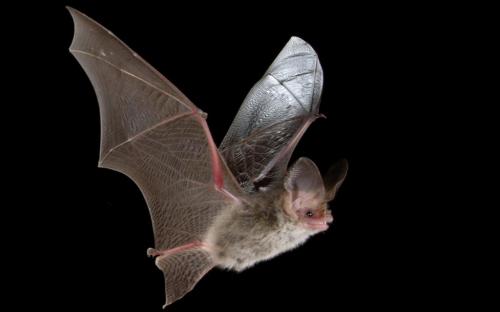This bat gets its name from its long ears. At up to 25mm long, the ears can be half as long as its 50mm body. It weighs around 8-10g.
The Lesser Long-eared Bat mostly eats grasshoppers, crickets and moths, but will also eat other invertebrates. It finds its food low to the ground, flying around bushes and shrubs to snatch its prey from the foliage or the air. It will even land on the ground if it spots a tasty insect or spider.
While hunting, the Lesser Long-eared Bat can fly at only 4kph, making it one of the slowest flying bats. Low speed combined with high maneuverability makes it well adapted for snatching prey from shrubs. Of course it can fly faster when it wants to, reaching speeds closer to 20kph when commuting.
Widespread throughout Australia, it roosts in caves, tree hollows, ceilings, hollow walls, peeling bark, Fairy Martin nests, under piles of bricks, in old hung up clothes and in canvas awnings, usually singly or perhaps 2-3 bats. However it prefers hollows in big old eucalypts for larger nursery colonies.
It switches roosts frequently, flying perhaps 6-12km to reach its hunting areas.
They mate in April and the female stores the sperm until August or September. She gives birth in November, often to twins, after gestation of 72-93 days.
Their primary natural predator is thought to be owls, but given they hunt close to the ground it's not surprising that Lesser Long-eared Bats are often killed by cats. Pesticides are also a problem.
The Lesser Long-eared Bat is supposed to be one of the most common microbat species in suburban areas, but surveys in the City of Bayside by Friends of Native Wildlife Inc. have found very few.

